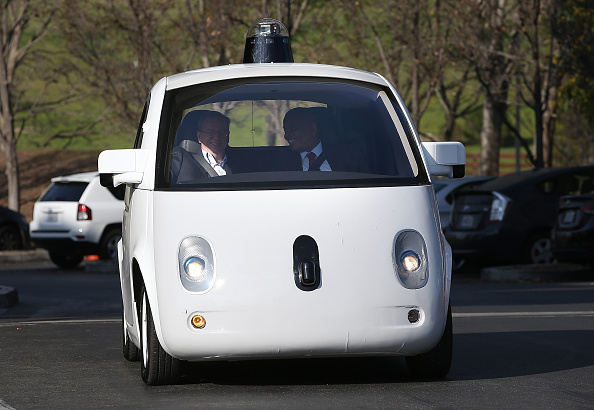Google's driverless cars follow all the traffic rules perfectly. That's actually a big problem.


Google's self-driving cars are really, really good at following traffic safety rules. But they still get into crashes — because human drivers are so bad at following the rules.
Since 2009, Google's driverless cars have been in 16 car crashes, with every single case being the fault of a human driver. The company was responsible for a crash only once — when a human employee, and not the computer, was controlling the self-driving car. Indeed, when Google's driverless cars follow the rules to the T, they actually get into trouble:
One Google car, in a test in 2009, couldn't get through a four-way stop because its sensors kept waiting for other (human) drivers to stop completely and let it go. The human drivers kept inching forward, looking for the advantage — paralyzing Google's robot. [The New York Times]
"The real problem is that the car is too safe," one expert explained. "They have to learn to be aggressive in the right amount, and the right amount depends on the culture."
The Week
Escape your echo chamber. Get the facts behind the news, plus analysis from multiple perspectives.

Sign up for The Week's Free Newsletters
From our morning news briefing to a weekly Good News Newsletter, get the best of The Week delivered directly to your inbox.
From our morning news briefing to a weekly Good News Newsletter, get the best of The Week delivered directly to your inbox.
Consider:
[Google's car] leaves what is considered the safe distance between itself and the car ahead. This also happens to be enough space for a car in an adjoining lane to squeeze into, and, [Nationwide Insurance safety expert Bill] Windsor said, they often tried. [The New York Times]
Dmitri Dolgov, the head of Google's Self-Driving Car Project, was blunt about the solution: For driverless cars to work the way they're supposed to, human drivers simply need to be "less idiotic."
A free daily email with the biggest news stories of the day – and the best features from TheWeek.com
Jeva Lange was the executive editor at TheWeek.com. She formerly served as The Week's deputy editor and culture critic. She is also a contributor to Screen Slate, and her writing has appeared in The New York Daily News, The Awl, Vice, and Gothamist, among other publications. Jeva lives in New York City. Follow her on Twitter.
-
 Nobody seems surprised Wagner's Prigozhin died under suspicious circumstances
Nobody seems surprised Wagner's Prigozhin died under suspicious circumstancesSpeed Read
-
 Western mountain climbers allegedly left Pakistani porter to die on K2
Western mountain climbers allegedly left Pakistani porter to die on K2Speed Read
-
 'Circular saw blades' divide controversial Rio Grande buoys installed by Texas governor
'Circular saw blades' divide controversial Rio Grande buoys installed by Texas governorSpeed Read
-
 Los Angeles city workers stage 1-day walkout over labor conditions
Los Angeles city workers stage 1-day walkout over labor conditionsSpeed Read
-
 Mega Millions jackpot climbs to an estimated $1.55 billion
Mega Millions jackpot climbs to an estimated $1.55 billionSpeed Read
-
 Bangladesh dealing with worst dengue fever outbreak on record
Bangladesh dealing with worst dengue fever outbreak on recordSpeed Read
-
 Glacial outburst flooding in Juneau destroys homes
Glacial outburst flooding in Juneau destroys homesSpeed Read
-
 Scotland seeking 'monster hunters' to search for fabled Loch Ness creature
Scotland seeking 'monster hunters' to search for fabled Loch Ness creatureSpeed Read

